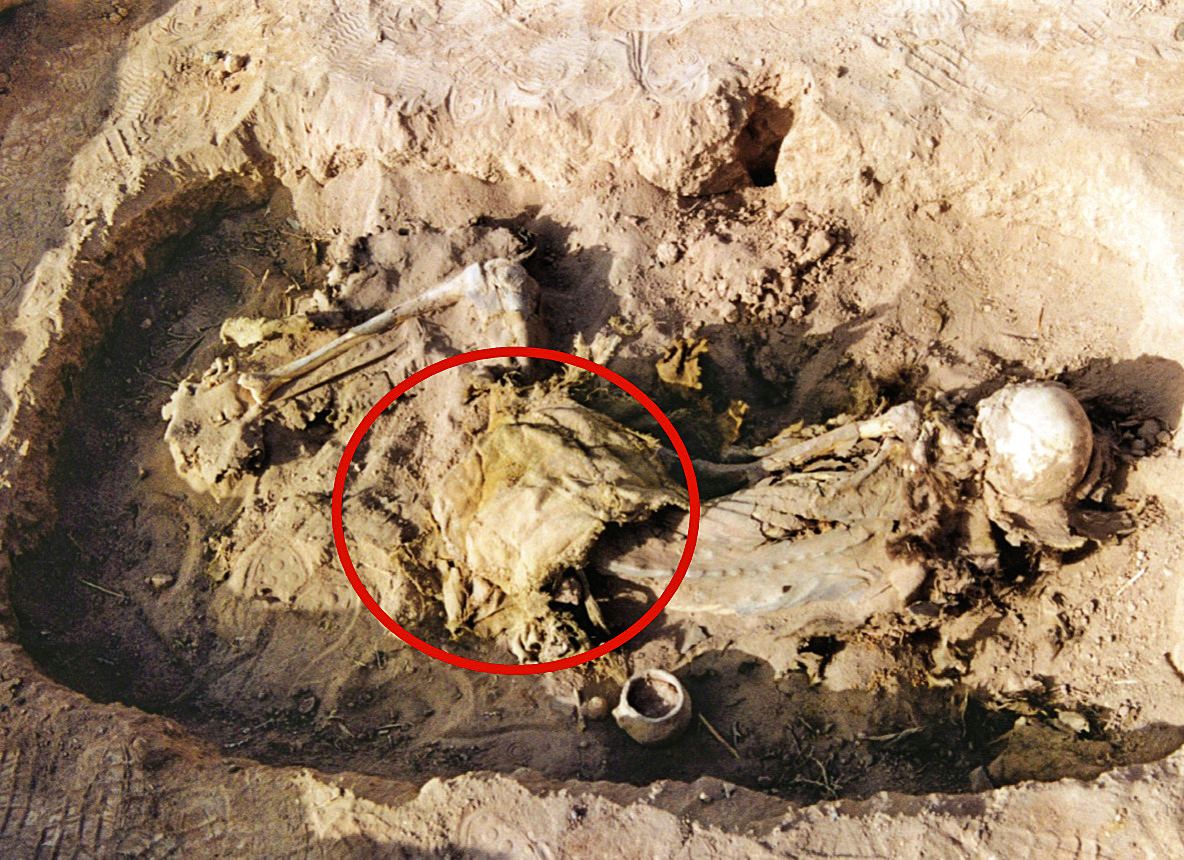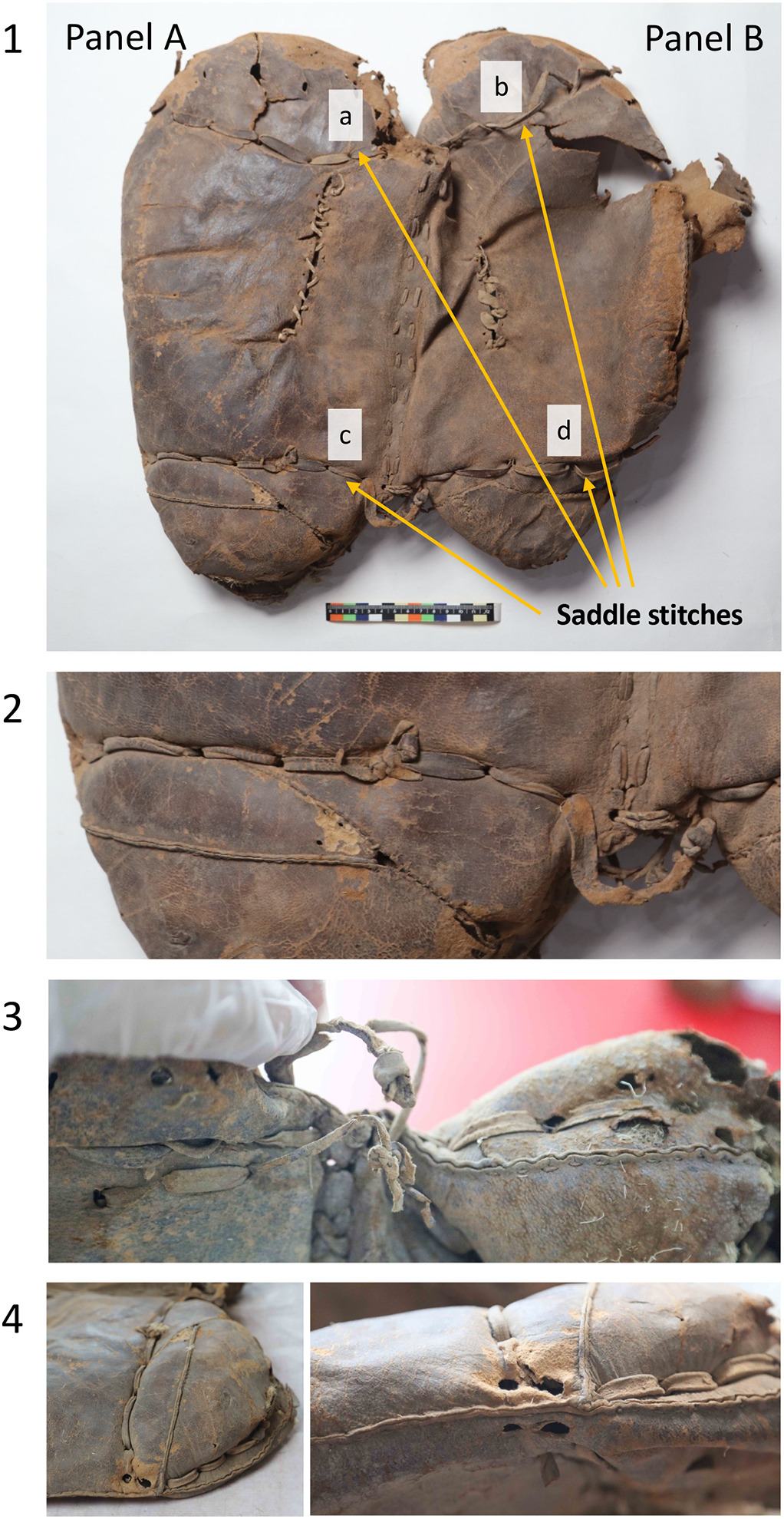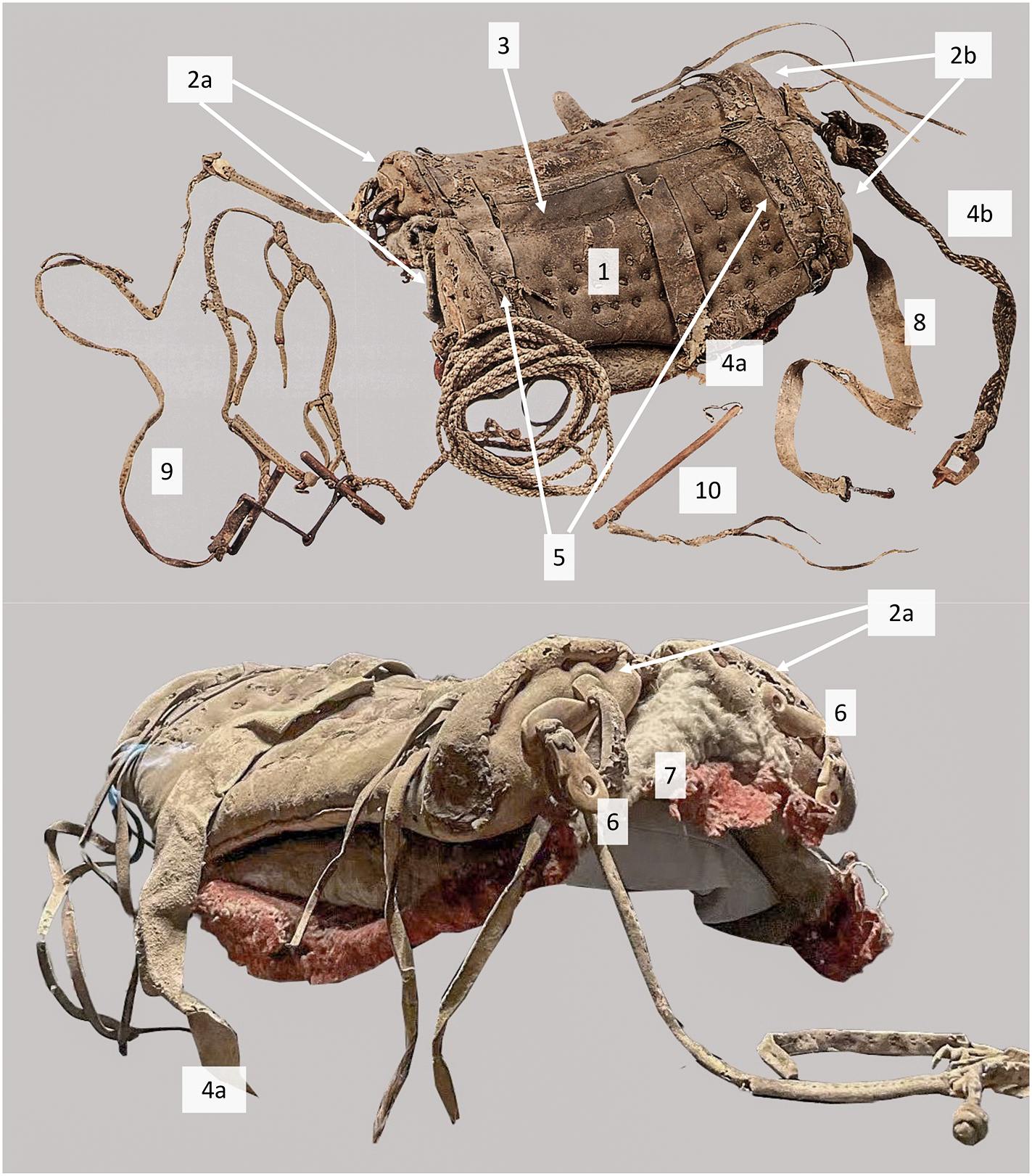An international team of archaeologists has found what may be the earliest known saddle at a dig site in China. In their paper published in the journal Archaeological Research in Asia, the group describes where the ancient saddle was found, its condition, and how it was made.

The saddle was discovered in a tomb at a cemetery in Yanghai, China. The tomb was for a woman dressed in what appeared to be riding gear – the saddle was situated in a way to make it look as if she were sitting on it. Dating of the woman and saddle show they are from approximately 2,700 years ago.
Prior research has found that domestication of horses first occurred approximately 6,000 years ago, though in the initial stages of domestication, the animals were used as a source of meat and milk. It is believed that riding of horses took another 1,000 years to develop.

Logic suggests soon thereafter, riders began looking for ways to cushion the ride. Saddles, researchers have suggested, likely originated as little more than mats tied to the horses back. Also, as the team on this new effort notes, saddles allowed riders to ride longer, which allowed them to roam farther and ultimately to interact with people in distant areas.
Prior research has shown that the people who lived in the area where the saddle was found, now known as the Subeixi culture, moved into the region approximately 3,000 years ago. It now appears that they may have been riding horses when they arrived.
The saddle the team found had been made by creating cushions from cowhide and stuffing them with deer and camel hair along with straw. It also allowed for sitting up, which helps riders aim better when shooting arrows. There were no stirrups, however. The research team suggests the more likely purpose of riding horses was to assist with herding animals.

The age of the saddle found in China predates that of ancient saddles found in the central and western Eurasian Steppe. The earliest of those has been dated back to sometime between the fifth and third centuries B.C. The researchers suggest that the earliest use of saddles was by people in China.
Orijinal olarak yayınlanan çalışma Asya'da Arkeolojik Araştırmalar. 25, 2023.




